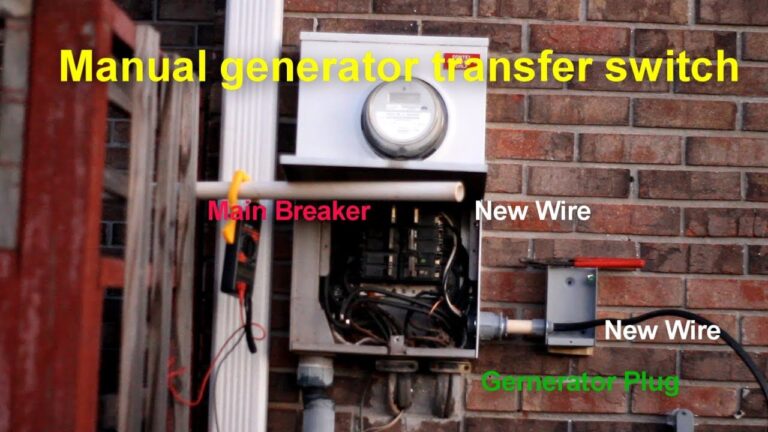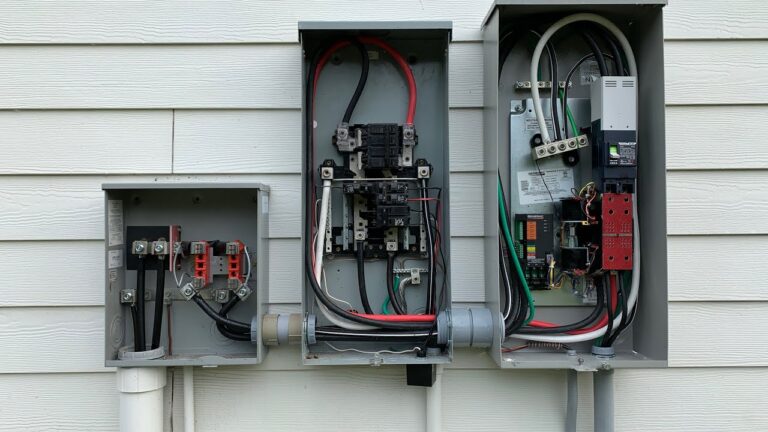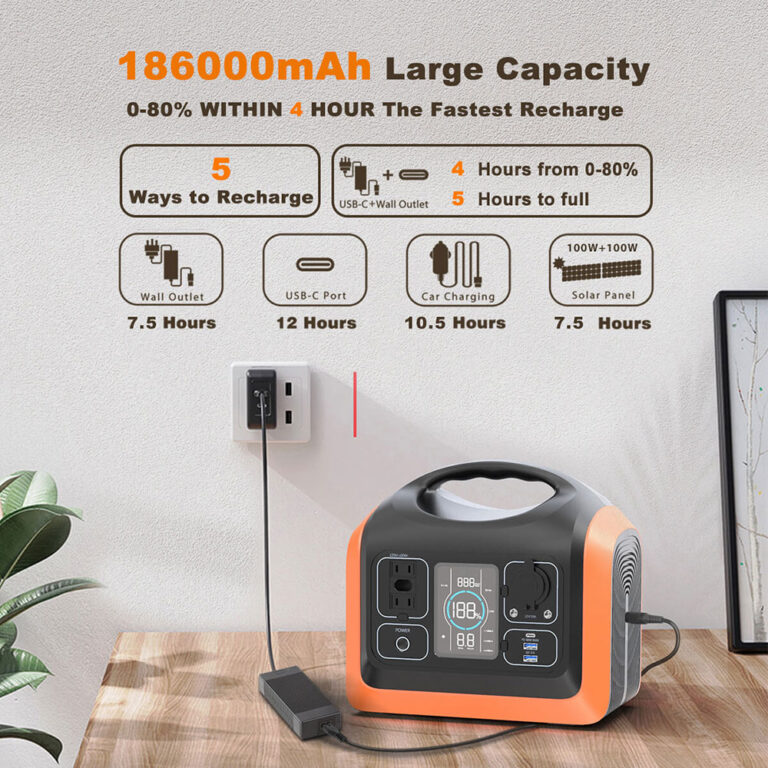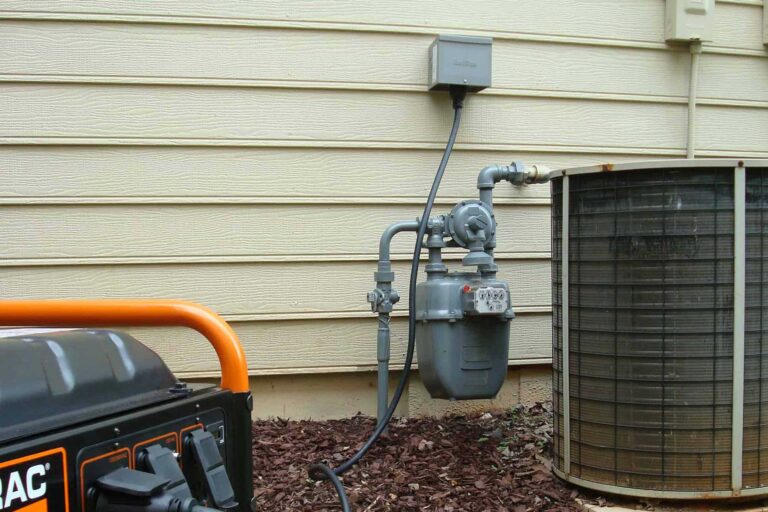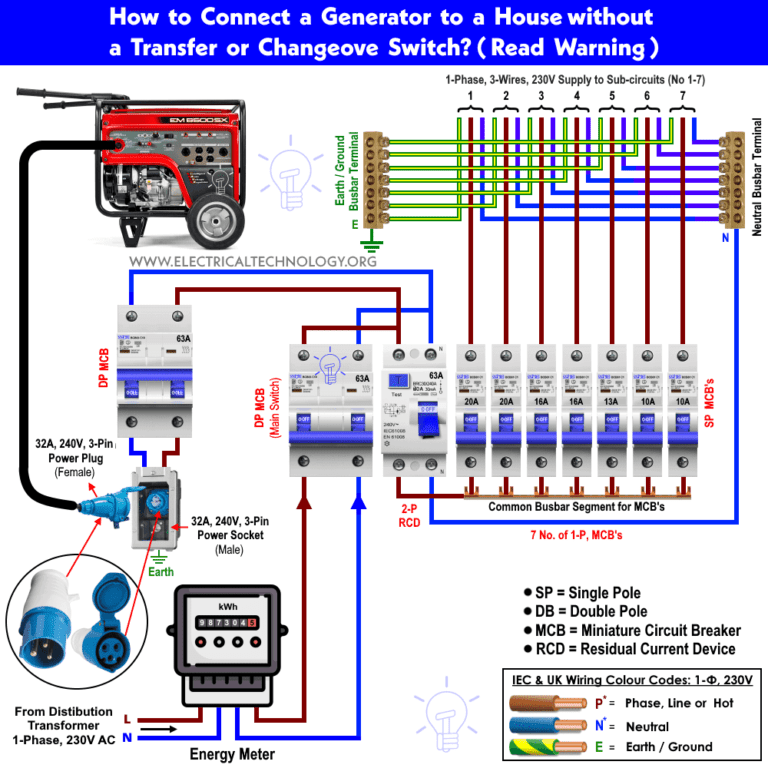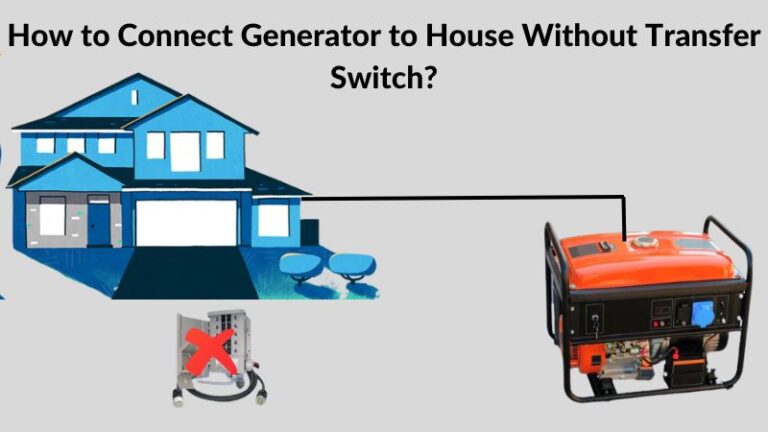Does Portable Generator Need to Be Grounded?
Yes, portable generators need to be grounded to prevent electrical shocks and fires. Grounding ensures that excess electricity has a safe path to the ground, protecting people and equipment from harm.
When using a portable generator, it’s crucial to follow proper grounding procedures to maintain safety and prevent potential hazards. Let’s explore the importance of grounding portable generators and the specific steps to ensure safe operation. We’ll also discuss the potential risks associated with improper grounding and provide essential tips for using portable generators safely.
Understanding the significance of grounding and following best practices will help ensure that your portable generator operates safely and effectively in various settings.

Safety First: Grounding Your Portable Generator
When it comes to using a portable generator, safety should always be your top priority. One crucial aspect of ensuring the safe operation of your generator is proper grounding. Grounding your portable generator is essential to protect yourself, your equipment, and others from potential electrical hazards.
The Importance Of Proper Grounding
Proper grounding of your portable generator is vital for several reasons:
- Safeguards against electrical shock: Grounding provides a direct path for electrical current to flow into the ground, reducing the risk of electric shock.
- Protects your equipment: Grounding helps prevent voltage spikes and surges, safeguarding your generator and any connected devices from damage.
- Prevents electrical fires: By grounding your generator, you minimize the chances of electrical fires caused by faulty wiring or improper handling.
Proper grounding also ensures compliance with electrical codes and regulations, giving you peace of mind that you’re operating your generator safely and within legal requirements.
Risks Of Operating An Ungrounded Generator
Operating an ungrounded generator poses significant risks that can have severe consequences. Without proper grounding, you expose yourself and others to:
- Electric shock hazards: In the absence of grounding, electrical currents can flow through unintended paths, potentially leading to electric shock for anyone in contact with these paths.
- Increased risk of equipment damage: Without grounding, voltage fluctuations and spikes can damage your generator and connected devices, resulting in costly repairs or replacements.
- Higher risk of electrical fires: Ungrounded generators are more susceptible to electrical fires due to the lack of a safe path for electrical currents to dissipate.
- Non-compliance with regulations: Operating an ungrounded generator may violate local electrical codes and regulations, resulting in penalties or legal consequences.
By understanding the risks associated with operating an ungrounded generator, you can prioritize proper grounding to mitigate these hazards and ensure a safe operating environment.
Unraveling Electrical Terms: Grounding Explained
What Does Grounding Mean?
Grounding in the context of electrical systems refers to the process of creating a pathway for electrical current to flow safely into the earth. This is achieved by connecting the electrical system to the ground, typically through a metal rod or water pipe. The purpose of grounding is to protect against electrical faults and reduce the risk of electric shock or fires.
How Grounding Protects Your Appliances And Home
Grounding safeguards your appliances and home by providing a pathway for excess electrical current to dissipate harmlessly into the ground. In the event of a surge or fault, the grounded connection ensures that the excess electricity is diverted away from the electrical system, preventing damage to appliances and reducing the risk of fire hazards.
Generator Grounding Requirements
National Electric Code (nec) Guidelines
According to the National Electric Code (NEC), portable generators must be grounded to ensure safety. This is particularly important during electrical faults or lightning strikes. The grounding process involves connecting the generator to a grounding electrode system such as a driven metal rod or a metal underground water pipe. This helps to prevent electrical shock and reduce the risk of fire hazards.
When Grounding Is Non-negotiable
Grounding a portable generator is non-negotiable in scenarios where the generator is used to power electrical equipment or appliances. Whether it’s for residential, commercial, or industrial use, proper grounding is essential to ensure the safety of individuals and protect the connected electrical devices. Furthermore, it is crucial to follow the manufacturer’s guidelines and the local electrical codes when grounding a portable generator.
Types Of Portable Generators: Grounding Variations
When it comes to portable generators, understanding their grounding requirements is crucial for safety and proper operation. Different types of portable generators have varying grounding needs, and it’s important to be aware of these variations to ensure you’re using your generator correctly.
Inverter Generators: Are They An Exception?
Inverter generators are a popular choice for their efficiency, quiet operation, and clean power output. These generators utilize advanced technology to produce stable electricity that is safe for sensitive electronic devices. When it comes to grounding, inverter generators are an exception.
Unlike conventional generators, inverter generators typically do not require grounding. This is because they are designed with built-in grounding systems that eliminate the need for additional grounding measures. The internal circuitry of inverter generators ensures that any potential electrical faults are automatically redirected to the generator’s frame, providing a safe operating environment.
Conventional Generators: A Closer Look At Grounding Needs
Conventional generators, also known as standard generators, have different grounding requirements compared to inverter generators. These generators are commonly used for powering heavy-duty appliances, construction sites, and emergency backup power.
When using a conventional generator, proper grounding is essential to prevent electrical hazards and protect both the generator and the connected devices. These generators typically require grounding to ensure the safe dissipation of electrical faults and to maintain a stable electrical flow.
It is important to follow the manufacturer’s guidelines and local electrical codes when grounding a conventional generator. Typically, grounding involves connecting a grounding rod or stake to the generator’s frame and then connecting it to a grounding wire or grounding system.
Grounding a conventional generator provides several benefits, such as:
- Reducing the risk of electrical shocks
- Protecting sensitive electronic equipment from power surges
- Preventing damage to the generator’s internal components
- Ensuring the generator operates within safe electrical parameters
It’s important to note that the specific grounding requirements may vary depending on the generator’s power output, design, and local regulations. Always consult the generator’s manual and seek professional advice if you are unsure about the grounding requirements.
Diy Grounding: A Step-by-step Guide
When it comes to using a portable generator, one crucial aspect that often gets overlooked is grounding. Grounding your generator is essential for safety reasons and to ensure proper functioning. In this step-by-step guide, we will walk you through the process of DIY grounding for your portable generator.
Tools And Materials Needed For Grounding
Before you begin, gather the following tools and materials:
| Tools | Materials |
|---|---|
|
|
Grounding Your Generator In 5 Easy Steps
Follow these 5 simple steps to ground your portable generator:
- Step 1: Determine the ideal location for the grounding rod, away from any flammable materials or structures.
- Step 2: Measure the length of the grounding wire needed to reach from the generator to the grounding rod.
- Step 3: Attach one end of the grounding wire to the grounding terminal on the generator using a wire connector.
- Step 4: Connect the other end of the grounding wire to the grounding rod using a grounding rod clamp.
- Step 5: Ensure a secure connection by using wire cutters/strippers to remove any excess wire and tightening all wire connectors and clamps.
Remember, proper grounding is essential to prevent electric shock and protect your portable generator from potential damage. By following these steps and using the right tools and materials, you can easily and safely ground your generator.

Grounding Rods: The Unsung Heroes
Portable generators are a great way to provide power during a power outage or when you’re on the go. However, one question that many people have is whether or not a portable generator needs to be grounded. The answer is yes – grounding your portable generator is essential to keep you and your loved ones safe.
One of the most important components of grounding your portable generator is the grounding rod. Grounding rods are the unsung heroes of the grounding process, as they provide a direct path for electrical current to flow into the earth.
Choosing The Right Grounding Rod
Choosing the right grounding rod is an essential part of the grounding process. You want to choose a rod that is made of a conductive material, such as copper or galvanized steel, and is at least 8 feet long. The longer the rod, the better the grounding will be.
It’s also important to make sure that the grounding rod is installed in a location where it will be able to conduct electricity into the earth. You should avoid installing the rod in areas with rocky soil or near bodies of water.
Installation Tips For Effective Grounding
Here are some installation tips to ensure that your grounding is effective:
- Drive the grounding rod into the earth until only a few inches are above the ground.
- Connect the grounding wire from the generator to the grounding rod using a grounding clamp.
- Make sure that the grounding wire is made of a heavy-duty, insulated material.
- Test the grounding to make sure that it is working properly before using the generator.
By following these tips and choosing the right grounding rod, you can ensure that your portable generator is properly grounded and safe to use.
Troubleshooting Common Grounding Issues
Portable generators can encounter grounding issues, which can be troublesome to troubleshoot. One common question is whether a portable generator needs to be grounded. In this blog post, we will explore this topic and provide insights on troubleshooting common grounding issues.
Identifying Grounding Problems
If your portable generator is not grounded properly, it can lead to electric shock or even a fire hazard. Identifying the grounding issues is crucial for the safety of both the users and the generator itself. One of the most common grounding problems is a broken grounding wire, which can occur due to wear and tear or accidental damage. Other issues may include loose connections, corrosion, or a faulty grounding rod.Quick Fixes To Restore Safety
It is always recommended to consult a professional electrician if you suspect any grounding issues with your portable generator. However, there are some quick fixes that you can do yourself to restore safety. Firstly, check all the grounding wires and connections and tighten them if necessary. Secondly, clean any corrosion on the grounding rod with a wire brush or sandpaper. Finally, replace any broken grounding wires or rods with new ones. It is important to note that these quick fixes are temporary and a permanent solution may require professional assistance.Summary
In summary, grounding your portable generator is crucial for the safety of both the users and the generator itself. Identifying and fixing grounding issues is essential to ensure that your generator operates safely and efficiently. Always consult a professional electrician if you are unsure about any grounding issues.Regular Maintenance: Ensuring Continuous Safety
Regular maintenance is crucial when it comes to ensuring the continuous safety of your portable generator. One important aspect of maintenance is proper grounding. By grounding your generator, you create a path for electrical current to safely discharge into the ground, reducing the risk of electrical shock and other hazards.
Inspection And Testing Of Generator Grounding
Inspecting and testing the grounding of your generator is an essential part of its regular maintenance. This process involves checking the condition of the grounding system and ensuring its effectiveness. Here are a few steps you can take to perform an inspection and testing:
- Visually examine the grounding wire for any signs of damage, such as fraying or corrosion.
- Ensure that the grounding wire is securely connected to both the generator and the grounding rod.
- Use a multimeter to test the continuity of the grounding wire. Place one probe on the generator’s grounding terminal and the other probe on the grounding rod. The multimeter should indicate a low resistance reading, confirming a good connection.
- If necessary, replace any damaged or faulty grounding components.
Maintaining Your Grounding System Over Time
Maintaining the grounding system of your portable generator over time is vital to ensure its continued effectiveness. Here are some tips to keep in mind:
- Regularly inspect the grounding wire for any signs of wear and tear.
- Check the connections between the grounding wire, generator, and grounding rod to ensure they remain tight and secure.
- After any significant electrical event or natural disaster, retest the grounding system to ensure its integrity.
- Keep the grounding rod clean and free from any obstructions that may hinder its ability to disperse electrical current.
By following these steps and incorporating them into your regular maintenance routine, you can ensure that your portable generator’s grounding system remains in optimal condition, providing you with a safe and reliable source of power when you need it most.
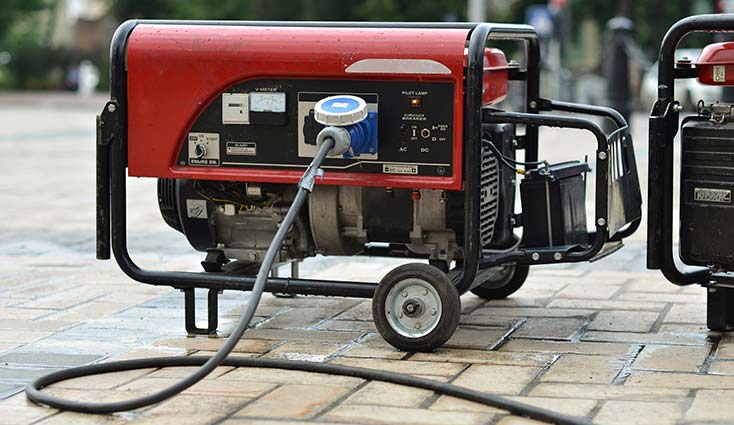
Conclusion
It is important to ground portable generators to prevent any electrical accidents. It not only ensures safety but also protects the generator from damage. It is essential to follow the manufacturer’s instructions and guidelines to properly ground the generator. Neglecting this crucial step can lead to dangerous consequences.
Therefore, always prioritize safety and take necessary precautions to avoid any mishaps.

